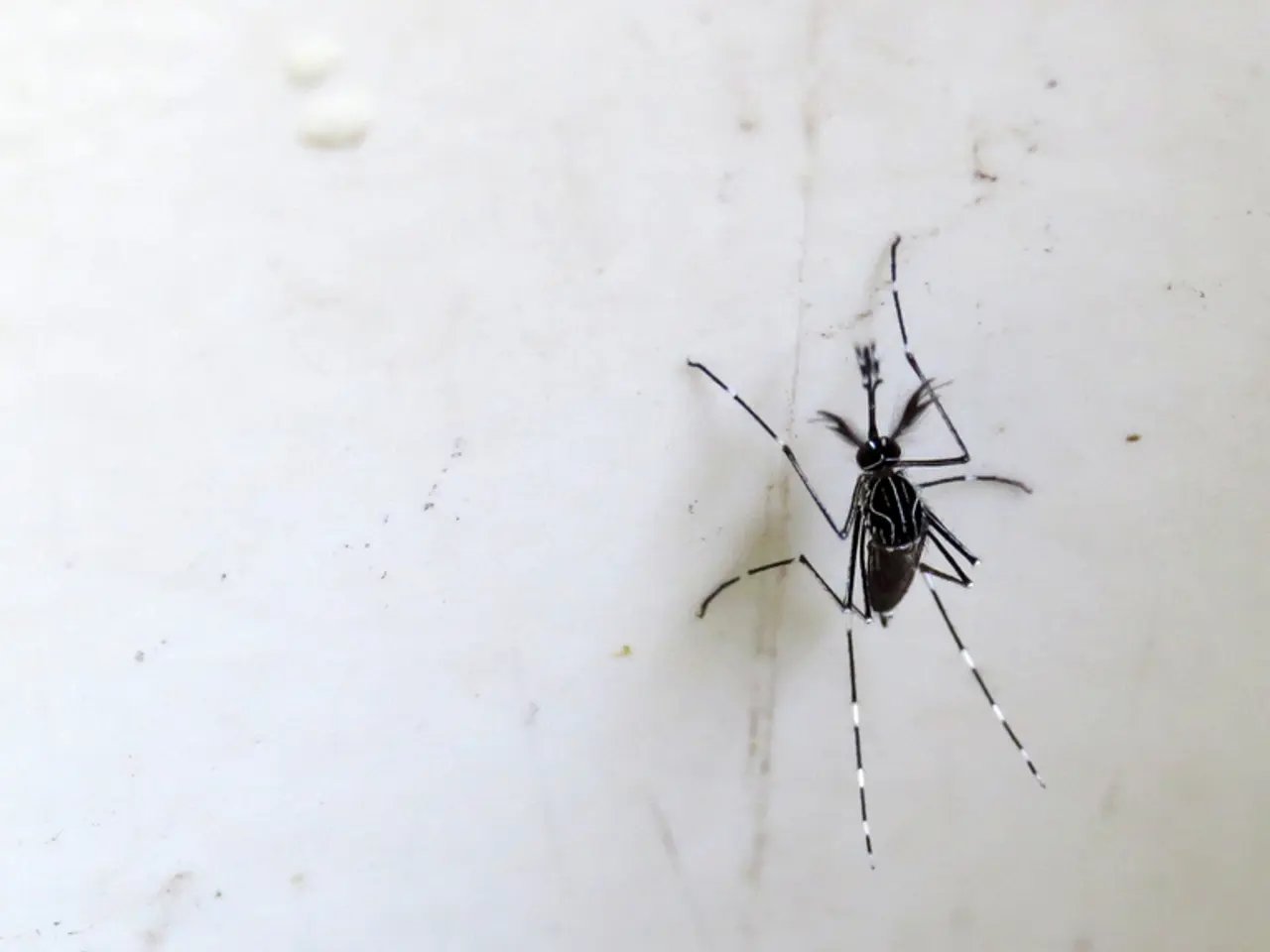Emergency room visits Surge due to increased instances of tick bites, highlighting the most frequent and alarming symptoms to watch out for.
In recent years, there has been a rise in tick-borne illnesses, with urban and suburban areas becoming increasingly affected. These blood-sucking parasites, which can vary in colour from light to dark brown and are usually no larger than an apple seed, can spread serious diseases such as Lyme disease, Rocky Mountain spotted fever, and babesiosis.
Ticks have been found to thrive in a variety of microhabitats, beyond forests or rural zones. They can be discovered in city parks and green spaces, suburban backyards, community gardens, tall grasses, dense leaf litter, mulch beds, overwatered lawns, brushy areas near water sources, and even inside homes for certain species.
City parks and green spaces in urban areas have been found to harbor disease-carrying ticks, with surveys showing about 70-80% of parks in places like New York City now have ticks. Suburban backyards and community gardens provide ticks with shaded, moist areas and potential hosts, creating suitable small-scale habitats within urban settings.
Tall grasses, dense foliage, and leaf litter create perfect questing platforms where ticks wait to latch onto passing hosts. Trimming these areas reduces tick presence. Mulch beds, shaded garden spots, and overwatered lawns offer ticks moisture and cover, making these common tick refuges in suburban yards. In some regions, such as Florida, certain ticks can live entirely indoors, hiding in carpet fibres, behind baseboards, inside couch cushions, and pet beds.
To avoid tick bites, experts recommend wearing light-colored, long-sleeved clothing, tucking pants into socks, using EPA-approved repellents, treating clothing with permethrin, bathing within two hours of potential exposure, and drying clothes on high heat for at least 10 minutes. Ticks like to hide in warm, moist areas on the body, with the most common targets being the scalp, around or inside the ears, stomach, groin, armpits, and the backs of the knees.
A key warning sign of a tick bite is a skin rash called "erythema migrans," which typically begins as a red spot near the bite and gradually spreads outward like a bull's-eye or target over several days or weeks. Other common symptoms of a tick bite include sudden fever, chills, fatigue, headache, and muscle or joint pain. In some cases, ticks can trigger allergic reactions ranging from mild itching to life-threatening anaphylaxis.
Gastrointestinal symptoms such as nausea, vomiting, and abdominal pain may also occur, but are less common in the early phase. Ticks can also cause meningoencephalitis, a rare but potentially deadly inflammation of the brain and its lining. Symptoms of meningoencephalitis include fever, headache, stiff neck, light sensitivity, confusion, seizures, and even coma.
With the rise in tick-borne illnesses, experts are urging residents to exercise "extreme caution" when spending time outdoors. The Northeast is getting hit the hardest, with the Fordham University Tick Index currently placing New York City in its "Red Zone." Emergency room visits for tick bites are surging nationwide, with July numbers hitting their highest point since 2017, according to the CDC's Tick Bite Data Tracker. Untreated tick bites can cause multiple organ failure and even death.
Thorough tick checks are essential after outdoor activities, especially in areas where ticks like to hide. People often get bitten underneath their socks and along the beltline - places where ticks can easily go unnoticed. To stay safe, it's important to be aware of microhabitats favorable to ticks and to take preventative measures to reduce the risk of tick bites.
- Media outlets in recent years have reported on the surge of tick-borne illnesses, affecting urban and suburban areas significantly.
- Science has been investigating the diverse microhabitats where ticks thrive, beyond forests and rural zones, including city parks, backyards, and community gardens.
- The rise in chronic diseases and medical conditions such as Lyme disease, Rocky Mountain spotted fever, and babesiosis, spread by ticks, has become a concern for workplace-wellness programs.
- Health and wellness advocates are stressing the importance of fitness and exercise to boost immunity against tick-borne diseases, as people spend more time outdoors.
- Therapies and treatments for autoimmune disorders and mental health issues, including anxiety and depression, may also play a role in individuals' resilience against tick-borne diseases.
- Skin-care experts recommend using protective measures, such as repellents and permethrin-treated clothing, to protect against tick bites, which can lead to skin conditions like erythema migrans.
- In the realm of sports, athletes and enthusiasts are urged to be especially vigilant when participating in outdoor activities, considering their increased exposure to ticks and potential tick-borne diseases.
- Sports betting has seemingly taken a backseat to concerns about tick-borne illnesses, as people nationwide are taking extreme caution while engaging in outdoor leisure activities.
- Medicare programs are likely to face increased demands for tick-borne disease testing and treatments, as a growing number of residents are potentially affected by these diseases.
- Neurological disorders like meningoencephalitis, triggered by tick bites, have been a worrying focus for medical professionals, as these conditions can have severe consequences, including coma or death.
- In the interests of health and wellness, campaigns are encouraged to raise awareness about the prevention and treatment of tick-borne diseases, promoting fitness, exercise, skincare, and knowledge about the microhabitats where ticks are most likely to be found.




